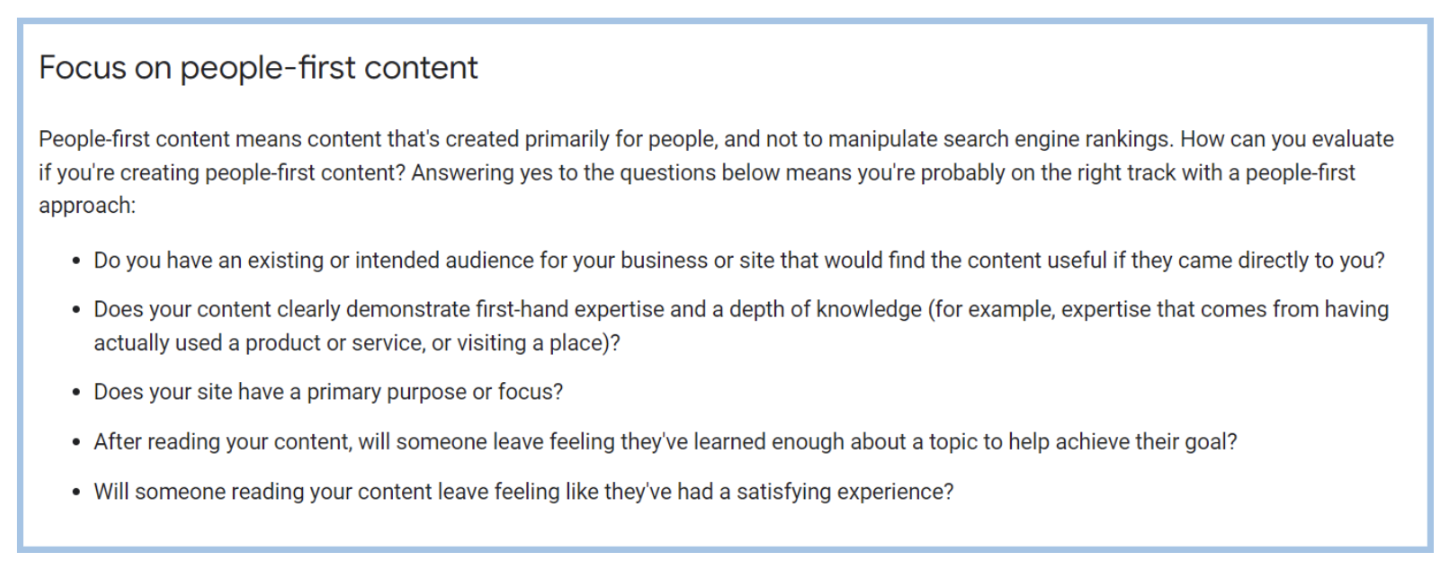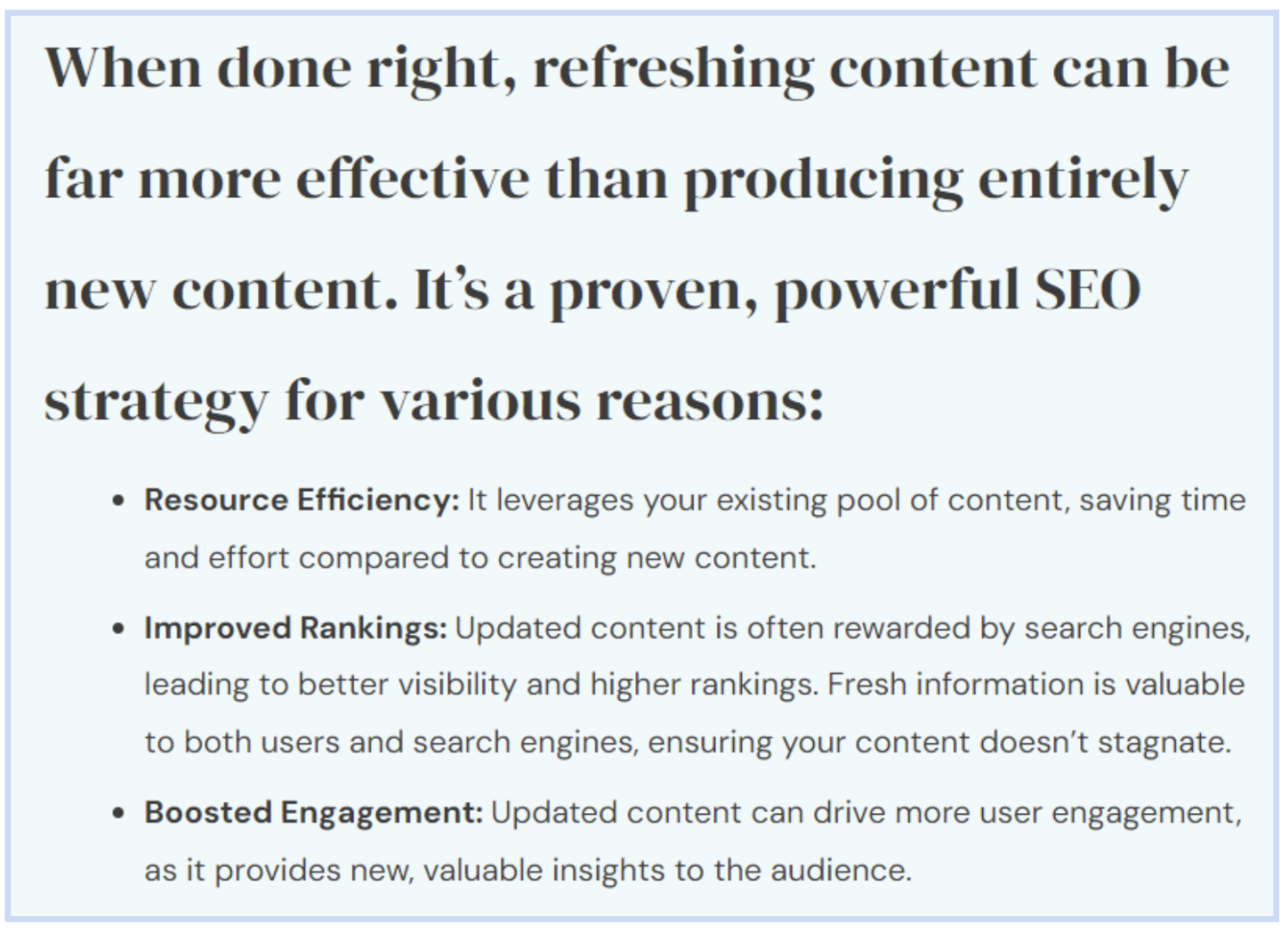Picture this: you log in to your Google Search Console one morning only to find your website’s traffic mysteriously plummeted, or worse, your website has been completely deindexed by Google! Well, that happened to a couple of website owners.
The world of SEO can feel like a rollercoaster ride, with algorithm adjustments capable of dramatically impacting your website’s visibility.
Take the rise of AI-generated content, for instance. Search engines are constantly refining their ability to identify and value high-quality content crafted for users and not just for ranking purposes.
But, you can be proactive in your content creation and future-proof your website. You ensure your website thrives, even with evolving algorithms. In this guide, we’ll look at strategies you can use to navigate these SEO currents and achieve sustainable content success.
What do evolving search engine algorithms mean?
These are the continuous updates and changes made by search engines that determine the relevance and ranking of web pages in search results. Evolving search engine algorithms aim to provide a more accurate, relevant, and personalized search experience for users.
And, these changes have a major impact on SEO strategies, requiring website owners and marketers to adapt to stay competitive.
Remember the good old days when writing content and adding all the relevant keywords and backlinks made it rank? Well, times have changed!
Today, algorithms prioritize user experience and satisfaction. Using user engagement metrics such as click-through rate (CTR), dwell time, and content quality, they try to deliver more personalized and relevant search results.
Here’s what algorithms have evolved to:
- Machine learning algorithms (like RankBrain) that analyze data to understand user behavior and intent better. They can interpret complex search queries and decipher the underlying purpose behind a query to deliver more accurate results.
- AI-powered algorithms that can detect spammy or low-quality content penalizing websites that engage in black-hat SEO tactics.
By understanding how search algorithms have changed, you can future-proof your websites and create long-term content success.
Many websites are still reeling from the recent March Core Update, which went as far as completely deindexing sites Google identifies as unhelpful.
Google is simply telling website owners to prioritize user-centric content creation. Whether you’re creating basic informational content like “best dentist near me” or transactional content like “buy baby shoes online,” catering to user intent is now crucial.
Importance of future-proofing content
Think of it as putting measures in place to ensure your website’s sail is steady. As search engine algorithms continue to evolve, your SEO strategies remain effective.
Future-proofed content SEO focuses on providing high-quality, relevant, and authoritative content that resonates with the target audience.
Let’s look at why you should future-proof your SEO content:
- Building brand credibility: When your content consistently ranks well because it’s informative, well-researched, and user-focused, it establishes you as a thought leader within your industry. Valuable content translates to user trust, which is crucial for building a strong brand reputation.
- Adaptability to algorithm changes: As Search engine algorithms change, your website remains optimized according to the latest algorithm updates, avoiding fluctuations.
- Attracting high-value traffic consistently: By strategically targeting keywords and user intent, you ensure your content resonates with users genuinely interested in what you offer. You attract the right kind of traffic, those who are likely to become qualified leads and join your customer base.
- Sustainability and longevity: Unlike tactics that exploit loopholes in search algorithms, future-proofing emphasizes creating valuable content that remains relevant over time. It’s like creating a content library that stands the test of time.
- Reduced maintenance needs: Nobody wants to keep tweaking their content to match the latest algorithm shifts. When you think “user and quality first” and future-proof your content, you reduce the need for frequent updates, saving on time and money.
The core principles of future-proof SEO content
At the heart of future-proof SEO content is high-quality and user-centric material that remains relevant regardless of changes in search engine algorithms and user behavior.
These principles are your investment for long-term success and visibility in SERPs.
Focus on user intent
Gone are the days when simply stuffing keywords into content guaranteed a top spot in search results. Today, search engines like Google prioritize user intent– understanding the “why” behind a search query – over simply matching keywords.
Here’s how you can master search intent in your content:
- Understand your customers’ search journey: A user’s “why” is different at the awareness stage, consideration stage, and decision level. For instance, someone searching for “best camera for YouTube” wants informational content with reviews and comparisons. On the other hand, a query on “buy camera online” suggests transactional intent.
- Craft content for each stage: By understanding the user’s search journey, you can create targeted content for each stage. This includes informative blog posts (awareness stage), in-depth reviews (informational phase) and detailed buying guides (consideration phase).
- Leverage search suggestions and answer boxes: Google Search Suggestions and Answer Boxes offer valuable insights into user intent. Integrate these specific phrases in your content. For instance, a query on “hair loss” might display suggestions like “hair loss causes,” “hair loss treatments,” or “hair loss prevention tips.”
- Utilize long-tail keywords: Since they’re more specific, long-tail keywords reveal user intent with greater clarity. You can target these instead of generic keywords and address the user better.
Content quality is king
After mastering your users’ intent, you can now create quality content. Your content should be informative and genuinely educate, entertain, or solve the problems for your target audience.
Whether it’s a blog post, a video, or a downloadable guide, your content should demonstrate expertise, address user pain points, and offer solutions.
[Case Study] How Unilever’s recipe platform puts SEO first
Here are some essentials you can adopt for quality content:
- Use credible sources like expert quotes and unique insights to showcase value and expertise.
- Maintain a conversational tone and improve readability with clear and concise language and visuals like screenshots and infographics.
- Focus on getting topical authority with content clusters to showcase a comprehensive knowledge base.
- Regularly optimize your content for freshness by updating it with new information, statistics, or insights on emerging trends.
High-quality content prioritizes user experience. And search engines reward websites with such content by giving higher rankings.
Optimizing technical SEO aspects
After writing and publishing your high-quality content, you’ll want your target audience to find it.
Technical SEO is about the crawlability, indexability and performance of your website; it ensures search engines can easily find, understand, and index your content. Let’s look at how you can optimize these further:
- Crawlability: How easily can search engines find and access the content on your website? You want to use a clear website structure with proper internal linking to help these crawlers navigate and discover all your content. If your website hosts lots of pages, submit an XML sitemap to ensure crawlers know exactly where to find everything.
- Indexability: You want search engines to understand and include all your content in their searchable database. This can be done by using well-formatted code with proper headings, meta descriptions, and title tags. You can also implement schema markup to give search engines additional context clues.
- Performance: After creating great content and getting indexed by search engines like Google, you must ensure your website works efficiently for users. For instance, a slow-loading page can frustrate your user, giving you a high bounce rate. Optimize your website for speed and mobile friendliness, and check if your images load fast enough.
A tool like Oncrawl can help you continuously monitor and adapt your website’s technical health. Oncrawl identifies crawl errors and pinpoints indexability issues like missing meta descriptions. You can also analyze the performance of your website for optimal user experience on all devices.
With clear data visualization and prioritization, Oncrawl helps you focus on the most impactful fixes.
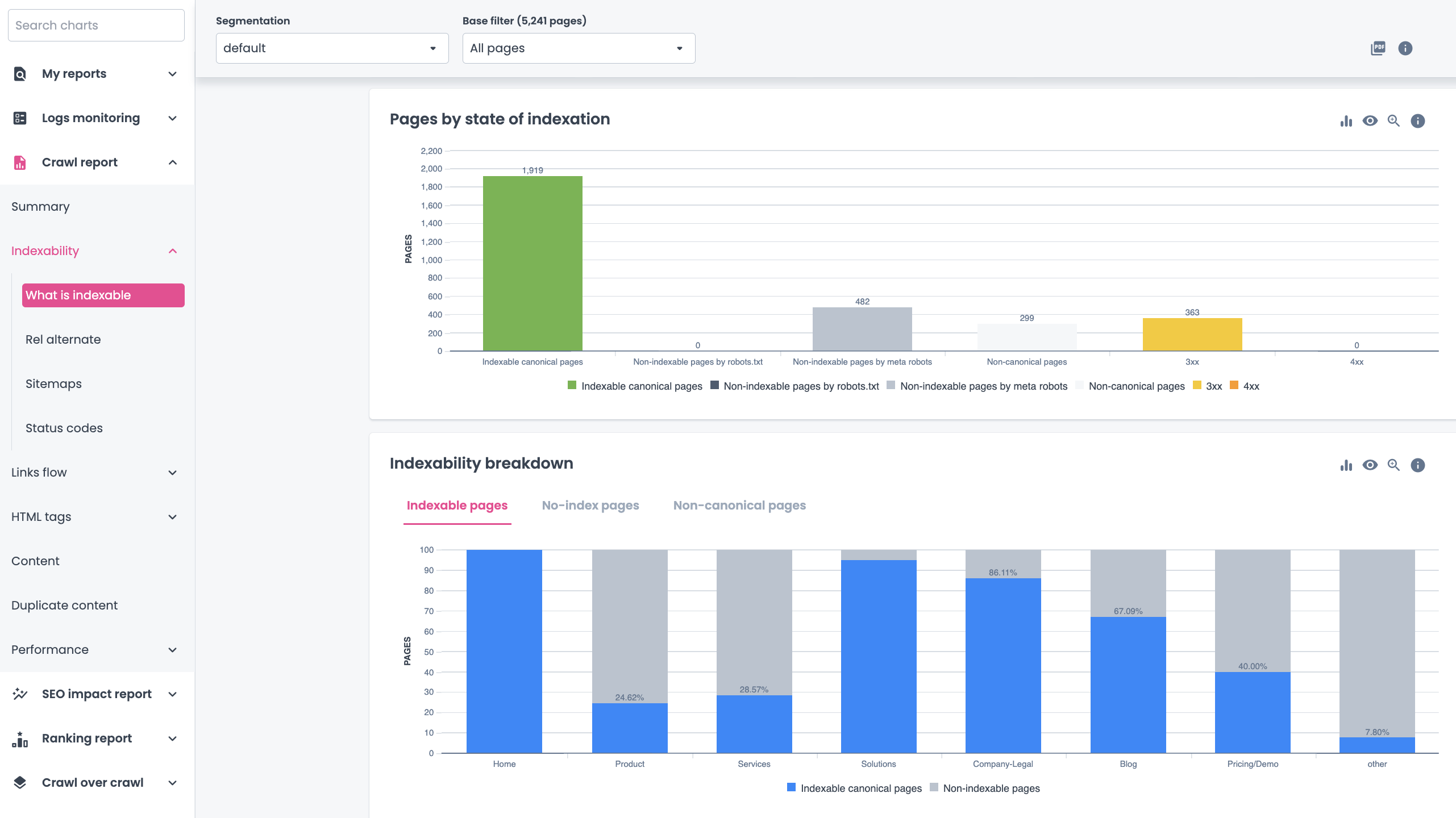
Source: Oncrawl
How to stay ahead of the curve and adapt to algorithm changes
Google changes its algorithm many times each year, with three or four major updates. You don’t really have to change your SEO strategy with each update, but employing a few simple tactics can help you stay informed and know when to tweak your website.
Let’s look at ways you can stay ahead of the algo change curve:
Embrace continuous learning
Google’s Search Central Blog is a good start for staying informed on what’s new in SEO. If you note a change in your site after an algorithm update, you can compare your content against Google’s updated guidelines and modify areas that might have been negatively impacted.
You can also follow publications like Search Engine Journal and Search Engine Land. Newsletters like SEOFOMO, which covers various SEO trends and news, are also great for learning.
Look into SEO conferences like Pubcon and MozCon and podcasts like SEO Office Hours to learn and network. You can also join SEO communities like r/SEO on Reddit and Women In Tech SEO and Facebook groups to interact with SEO experts.
Leverage data and analytics
While staying informed about industry trends is important, true SEO mastery lies in leveraging data and analytics.
Website analytics tools like Google Search Console (GSC) help you understand user behavior and optimize your SEO strategy accordingly. You can get insights into how users interact with your website, the keywords driving visitors to your site, and their ranking fluctuations on SERPs.
The key metrics you want to track on GSC include organic traffic, bounce rate, and time on page. These will give you actionable insights into user behavior.
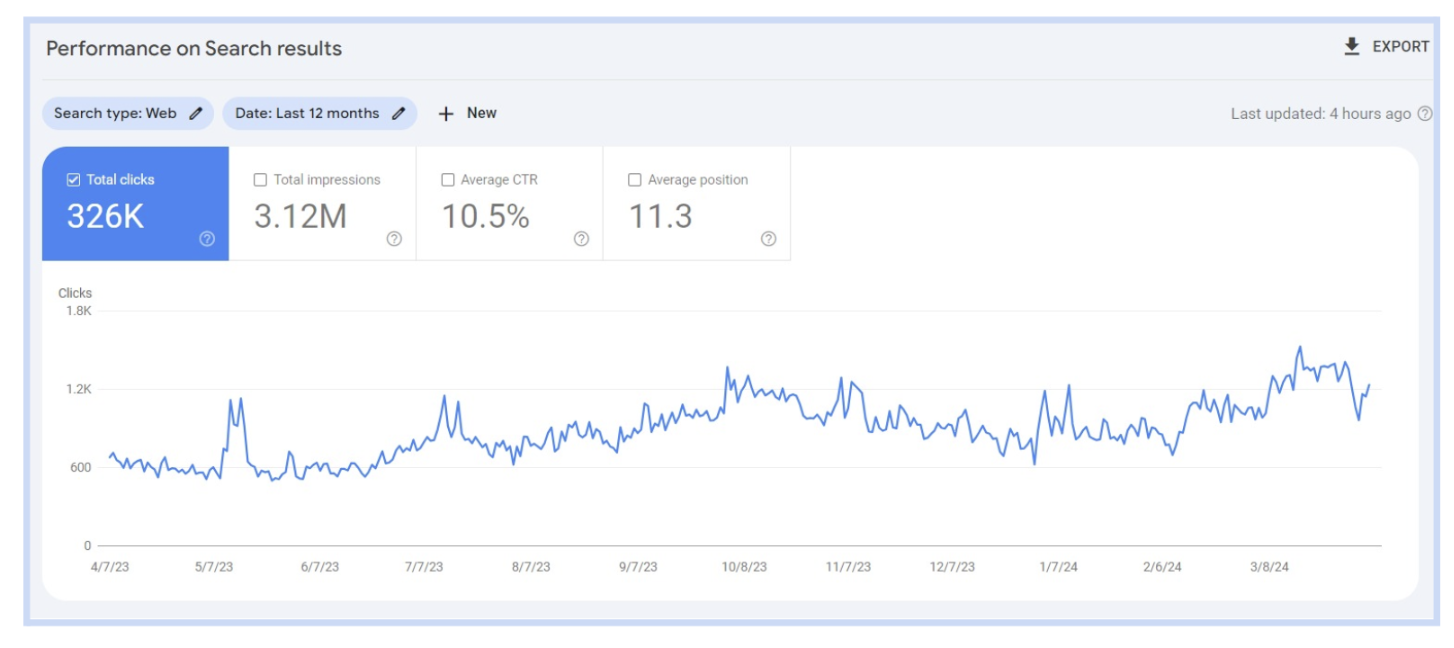
Source: Google Search Console
For deeper insights, consider website analytics tools like Google Analytics (Freemium) or paid options like Ahrefs and SEMrush. These tools provide a wealth of data on user behavior, allowing you to identify content gaps and opportunities to improve user engagement.
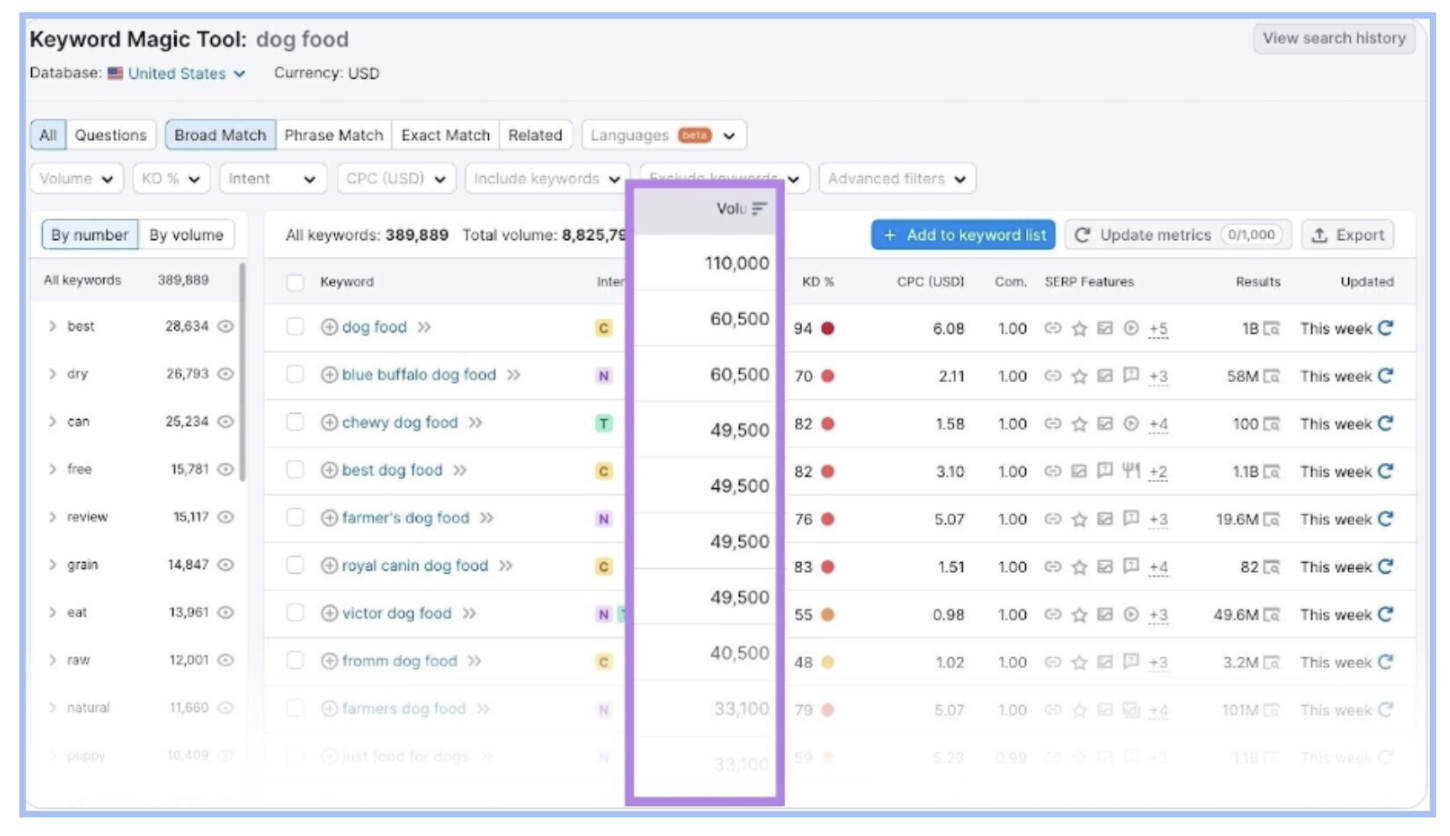
Source: Semrush
Backlink monitoring tools like Moz Link Explorer can also be valuable. With data insights, focus on creating high-quality content that earns backlinks naturally from credible sources in your niche. This builds long-term SEO value and establishes your website as a trusted authority.
By combining free and paid tools, you can gather the data and insights needed to craft a future-proof SEO strategy that ensures your content remains discoverable and relevant for years to come.
Regularly refresh your content
Content refreshment is the key to maintaining its relevance, ranking potential, and user engagement. Search engines favor fresh, accurate content. Refreshing content signals value and can boost your ranking potential.
How often should you refresh content? It depends on your niche and the content itself. For instance, for fast-moving topics like tech or current events, you can refresh every 3-6 months, while 12-18 months would be ideal for evergreen content.
When refreshing content, optimize for new keywords, update statistics, and address any new perspectives that are relevant to your topic. You can also revise outdated formatting and add fresh visuals for better user engagement.
Beyond rankings: Building a content strategy for success
While rankings are important, a truly successful content strategy goes far beyond just chasing the top spot. It helps attract and retain loyal users while establishing you as a thought leader in your industry.
Here are some strategies to consider for a solid content strategy.
Diversify content formats
Not everyone consumes information the same way. Attention spans vary, and people learn in different ways. By using a variety of content formats, you cater to a wider audience and increase your chances of getting more engagement.
For instance, blog posts offer an in-depth exploration of topics and establish you as a knowledgeable source, while videos easily capture attention and cater to visual learners. You can also include podcasts to cater to auditory learners and infographics whenever you want to demystify complex information.
Other types of content may include case studies, white papers, webinars, and short videos. As you create diverse types of content, you’ll be forced to distribute them to different platforms beyond SERPs, increasing your customer contact points.
Focus on building brand authority
Google uses experience, expertise, authoritativeness, and trustworthiness (E-E-A-T) as a guide for quality assessment.
Creating high-quality, authoritative content positions your brand as a thought leader within your industry. As we’ve seen above, invest time and effort in creating well-researched, informative content that provides genuine value to your audience.
Conduct original research, share expert insights, and offer unique perspectives. This establishes your brand as a trusted source, and fosters trust with your audience.
You can leverage your company’s internal expertise. For instance, your colleagues may have incredible knowledge in product development, data science, or even customer success. Insights that your readers will find helpful.
Industry influencers and external experts can also add fresh perspectives to help you broaden your reach with content. Be sure to reach out occasionally to external SEO experts to create quality content.
Valuable content will earn you backlinks from high-quality, relevant websites, signaling to search engines that your content is valuable and trustworthy.
Prioritize user engagement
Engaged users lingering on your website (high time on page, low bounce rate) signal valuable content to search engines, potentially boosting your ranking. It shows your content is not a one-way street.
Additionally, engaged users are more likely to become loyal visitors, convert into customers, and brand advocates, leading to long-term success.
To fuel user engagement with your content:
- Incorporate clear calls to action (CTAs) throughout your content. For instance, encourage readers to subscribe to your newsletter, download a white paper, or visit a specific product page.
- Incorporate interactive elements like quizzes, polls, and surveys to increase user engagement and make your content more memorable.
- Boost the visibility of your content by promoting it across social media platforms and encourage user engagement. Respond to comments, participate in conversations, and leverage social media to build a community around your brand.
Create a content strategy that goes beyond chasing rankings by building a strong foundation for long-term success, attracting a loyal audience, and establishing your brand as a leader in your field.
Key takeaways
The SEO landscape constantly changes course. With the right strategies, you can navigate these fluctuations without breaking your website whenever a new update comes up.
You can embrace continuous learning by following industry leaders, SEO news, and attending conferences. This way, you remain informed on any new changes in the algorithms.
Ensure the content you publish is high-quality, informative content that caters to user intent. Additionally, you should regularly refresh existing content to maintain its relevance and incorporate new trends and insights.
You should also have diverse types of content to cater to different learning styles and reach.
By future-proofing your SEO, you will attract more qualified visitors who are actively searching for your solutions. You will also enhance your brand visibility and establish yourself as a leader in your industry.


